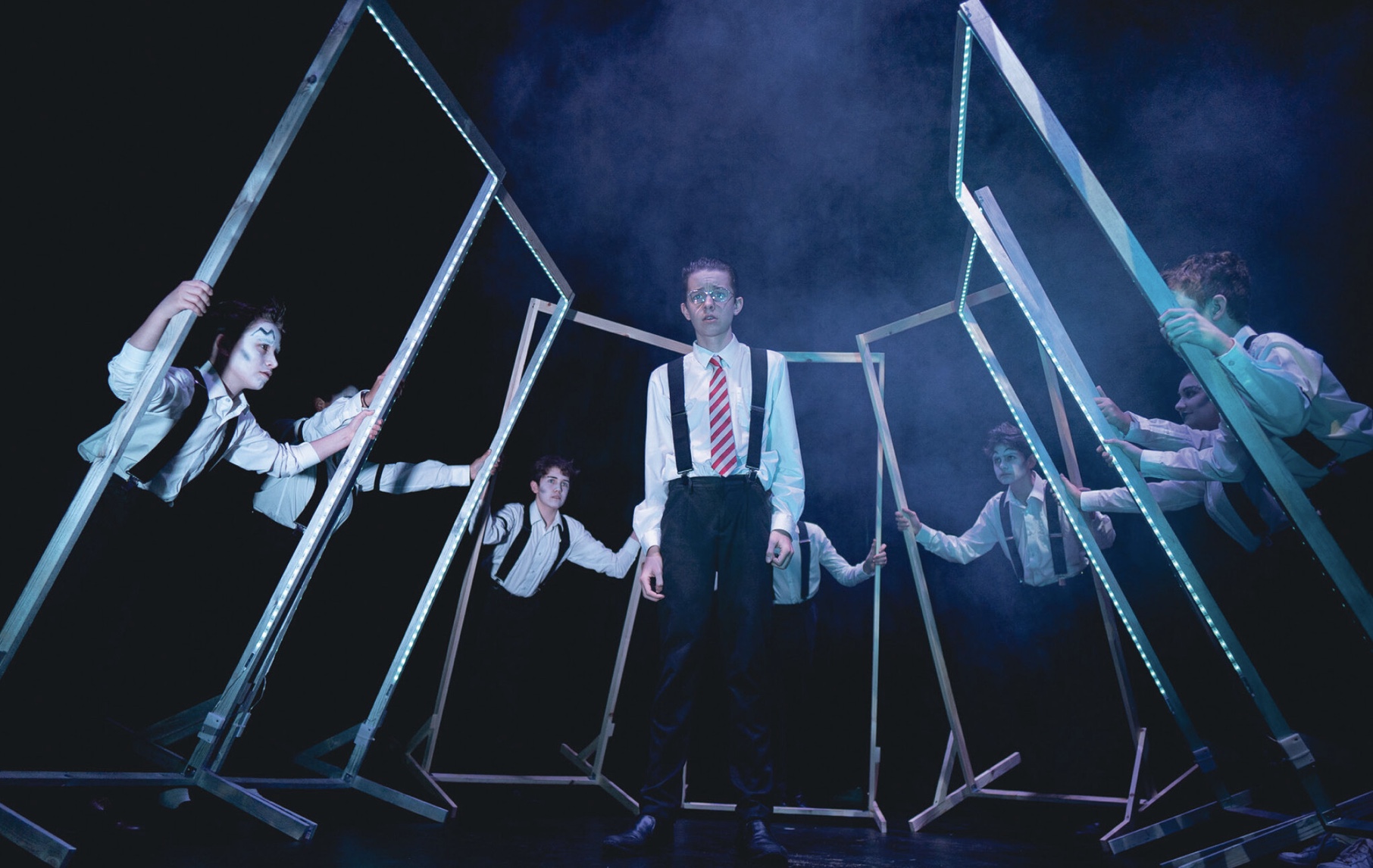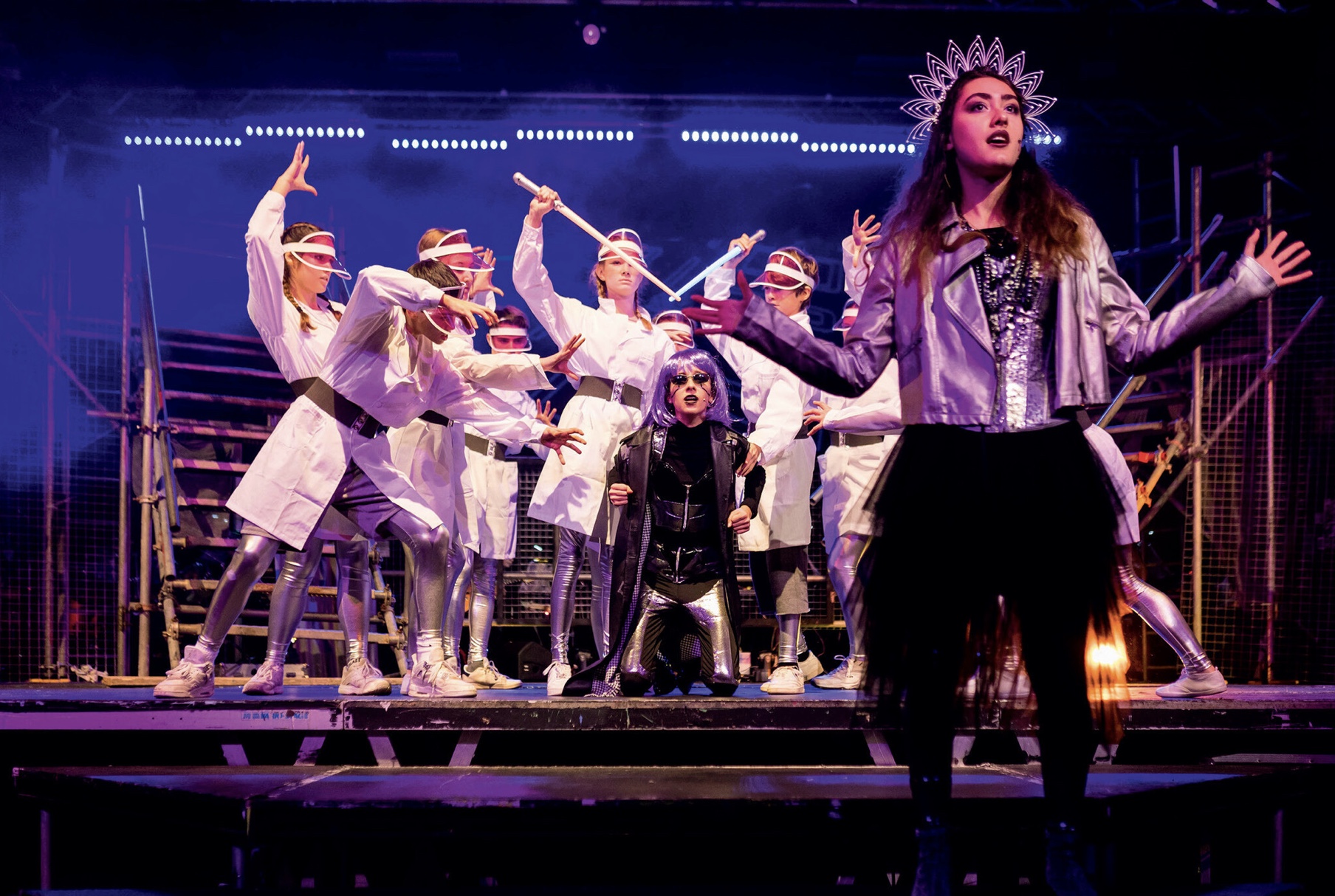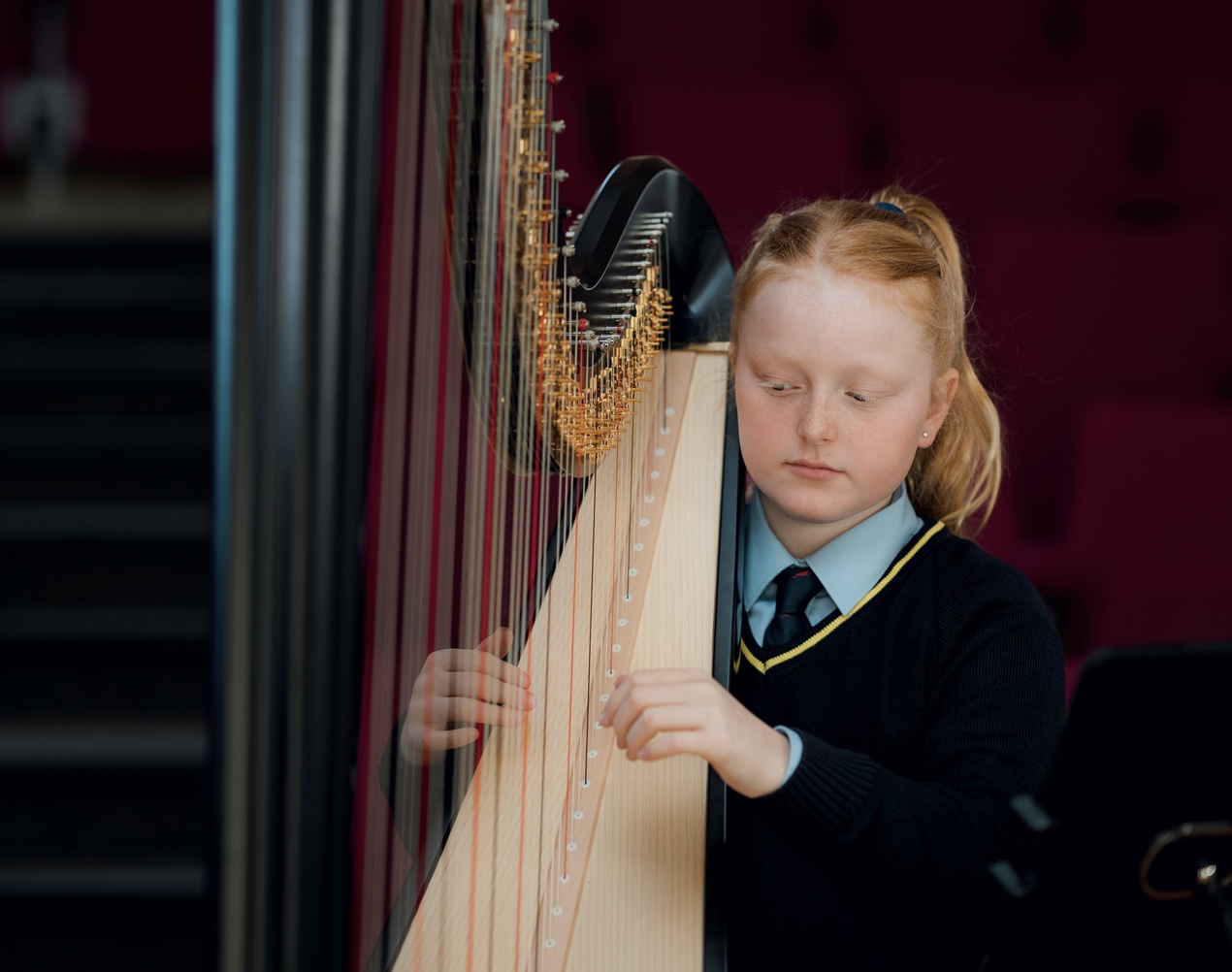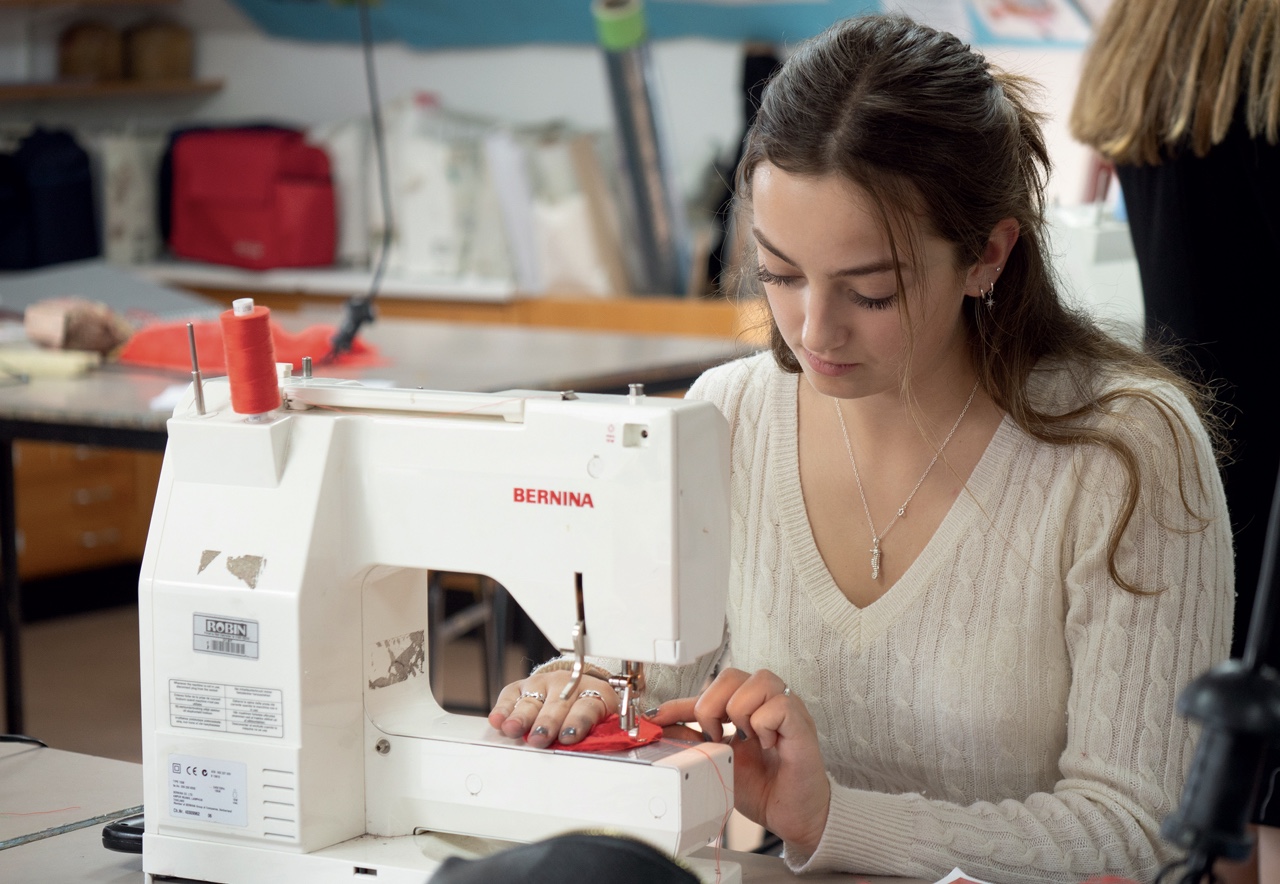Arts and STEM: How the best schools are getting the right balance between science and creativity
Curriculums and A-level choices may be gravitating towards science and technology, but the Arts still have much to offer in terms of life lessons, balance and presentational skills, finds Lucy Higginson.


The pianist Myra Hess — who famously gave daily concerts in the National Gallery throughout the Blitz — is one of many to have known the value of the Arts in dark times, but the numbers of children studying them in school these days is sadly shrinking. As subjects such as psychology and computer science find increasing take-up, roughly 30% fewer than a decade ago are sitting Arts A levels, according to education researchers FFT Datalab.
The problem is compounded further in the state sector by shrinking funding as the focus shifts to STEM subjects (science, technology, engineering and maths). This is not only sad, but important, especially when you consider that ‘children who engage in the arts are more likely to volunteer and to vote… and to show significant improvement in social cohesion and cooperation’, according to research analysed by the Cultural Learning Alliance, which champions access to the Arts for all children.
The story is not universally depressing, however, especially in Britain’s independent schools, where standards of music, drama, art, dance and general creativity appear higher than ever. There are several reasons for this, including amazing facilities, and — in many cases — a much longer school day in which to fit it all in. Dazzling concerts, shows and plays can run independent of exams and are great marketing collateral in a competitive market. Opportunities extend far beyond chapel choir and plays these days, as schools respond to teenage tastes with open-mic nights, hip-hop troupes and film-making clubs.

Certainly, Sarah Bird, head of drama at King Edward’s School (KES) Bath, is not downcast. She feels that prep and junior schools are teaching drama better than ever and has adjusted the curriculum at her school accordingly: ‘Society is more aware now that we are more than merely the STEM subjects — there are other parts of ourselves that we need to feed,’ she says.
‘People understand better the role the extracurricular subjects play in a child’s development — and see that drama is invaluable in that. The creative, leadership and interpersonal skills in the Arts, thinking about different people’s points of view, empathising — these skills help with anything. It’s about message shaping — drama is good for medics, for example.’
At a time when we have never been required to work and study so much online, Arts teachers point to the irreplaceable benefits of physical time with others making music, acting and more, and have noticed their students’ thirst for it. ‘It’s about being a community,’ observes Vicky Harding, head of Repton Prep in Derbyshire and herself a former professional musician. ‘Why else do schools all run house singing contests?’ ‘Girls in art club head straight for the paint,’ adds another head of art. ‘They’re tired of screen time.’

Many of us will acknowledge that our path in life has been smoothed by an ability, first germinated in school, to address an audience, give a presentation, dream up fresh creatives or speak on camera. Equally as important as developing these skills early on is stumbling over them sometimes. Arts teachers everywhere point to the fact that theirs are not clear-cut right or wrong subjects. ‘Art definitely teaches resilience when it doesn’t work out and you have to start again,’ agrees Olivia Antolik, head of art at St George’s School, Ascot, a small independent girls’ school with a thriving uptake in creative subjects. Mrs Bird agrees that ‘learning to put a project back on course when it’s derailed’ is a big part of drama, too, together with ‘critically reviewing each other’s work and using that criticism productively’.
Exquisite houses, the beauty of Nature, and how to get the most from your life, straight to your inbox.
The Arts are often held up as the counterpoint to STEM subjects, but they involve ever more cutting-edge technology and science also requires creative thinkers. Hence the rising numbers of schools expanding STEM to STEAM — not least at Gresham’s in Norfolk, where the art department inhabits the gleaming new Dyson Building, with technical drawing, graphics and 3D design cheek by jowl with maths and robotics.
Although clever children at selective schools lean frequently towards STEM A levels, there is evidence of technology and the Arts cross-fertilising in new university courses, such as visual effects for film and television or games design — both recent degree choices for boys from Bedford School, another school that excels in the Arts. ‘Creative arts are very strong here and boys do choose some really unusual courses that combine the Arts and Sciences,’ agrees the head of creative arts there, Antoinette Keylock.
Whereas state schools struggle with budget freezes, independents have been able to invest heavily in facilities and found in them obvious projects with partnership schools. Facility sharing and joint productions abound, supplementing the work of brilliant charities such as Arts Emergency (www.arts-emergency.org), which connects under-resourced areas with working artists.
Another growing trend is having an artist or director in residence, with a new graduate given lodgings and the run of the art studios in return for working with and inspiring pupils. ‘We get a new artist in residence each year, usually a recent graduate who is bang up to date on things such as digital portfolios,’ says Miss Antolik. ‘Our current one at St George’s studied fine art at Oxford, but is also a print-maker who works with clay. She makes her art and joins in with lessons and the inspiration runs both ways.’ Repton does this, too, and KES Bath has for several years welcomed drama interns.

Many of us have learnt what brilliant musicals, plays and concerts Britain’s leading schools put on these days, for nominal or often no charge. Driving 60-odd miles to see a godson in a school show is no longer a chore, but a bargain. Or, as a fellow mother confided after a sensational Chicago at Benenden recently: ‘I spent a fortune on the Tina Turner musical last week and I’ve had just as much fun tonight.’
This reflects both the substantial rehearsal time invested in such shows at schools children do not have to commute to, but also some extremely fine teaching. Although there may be fewer art and music A-level applicants, teaching jobs in these subjects were always oversubscribed and are even more so since covid. One head of art admits to beating 100 applicants for her job; you repeatedly find working artists moonlighting in schools, even at junior level, as at Heath Mount in Hertfordshire, a prep producing fantastic ceramics, textiles, animation and more. Peripatetic music teaching roles are similarly prized: City of London School for Girls recently had 25 potential candidates to teach the oboe. ‘Often, you’ll have 40 to 60 applicants to be a “peri”,’ agrees Mrs Harding, who is married to one.
Another factor driving musical standards in the independent sector, especially boarding schools, is the rising numbers of Chinese pupils, who all seem to be born clutching a violin. Eton’s symphony orchestra, which is roughly half Asian, performs Tchaikovsky with staggering maturity.
Here, too, is another lesson from the Arts: great artistry requires great effort. ‘I spend a huge amount of my time as a head using skills I acquired as a musician,’ explains Repton Prep’s Mrs Harding. ‘Hard work, repetition, resilience — I did that every day. Music requires discipline, practice, problem solving and a sense of responsibility.’ She regularly takes her pupils to inspiring performances from older children at Repton School, ‘but I tell them you only get there if you work for it’.

It is often in the art, dance, music or drama studio that a child who has a difficult relationship with school finds their toehold. ‘Lots of students come through our doors at KES who have quite complex mental-health issues — they can work them through in a different space,’ says Mrs Bird. ‘We will see certain children flourish when another teacher might not. A lot of artists are slightly tortured souls — it may be a cliché, but there’s some truth in it.’ Similar things have been observed at St George’s Ascot: ‘It is a bit of a sanctuary,’ says Miss Antolik of her art department. ‘It’s lovely to see girls who have struggled to come into school initially gradually spending more time here.’
If art is indeed ‘the stored honey of the human soul’, we need exposure to it at an early age. No matter if we don’t make it a career — it will help us in almost everything we do and its beauty will help beat away the clouds.
Country Life is unlike any other magazine: the only glossy weekly on the newsstand and the only magazine that has been guest-edited by His Majesty The King not once, but twice. It is a celebration of modern rural life and all its diverse joys and pleasures — that was first published in Queen Victoria's Diamond Jubilee year. Our eclectic mixture of witty and informative content — from the most up-to-date property news and commentary and a coveted glimpse inside some of the UK's best houses and gardens, to gardening, the arts and interior design, written by experts in their field — still cannot be found in print or online, anywhere else.
